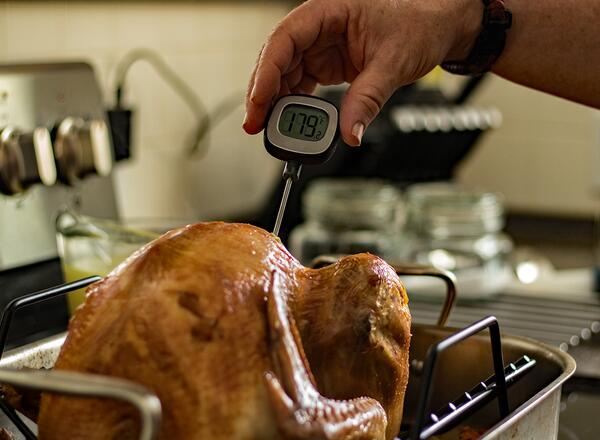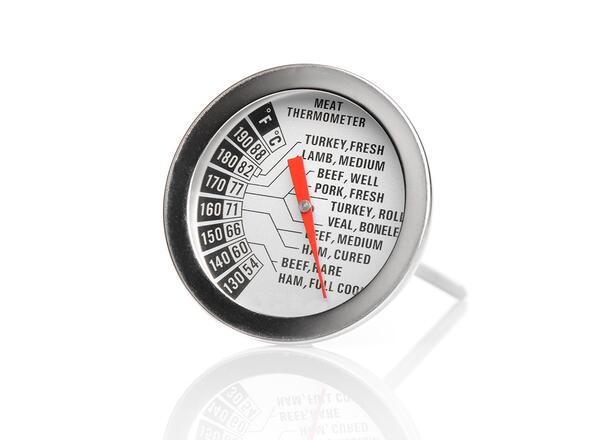
Gently spin the head or dial of the meat thermometer around so you can easily see the reading without removing the turkey from the oven. As the turkey roasts, the thermometer may move out of position, don't worry, and simply reposition the thermometer. A whole turkeys and turkey parts are safe when cooked to a minimum internal temperature of 165 °F as measured with a food thermometer. Check the internal temperature in the innermost part of the thigh and wing and the thickest part of the breast. The turkey is safe to eat at this point but some consumers, for reasons of persona preference, may choose to cook turkey to higher temperatures.

